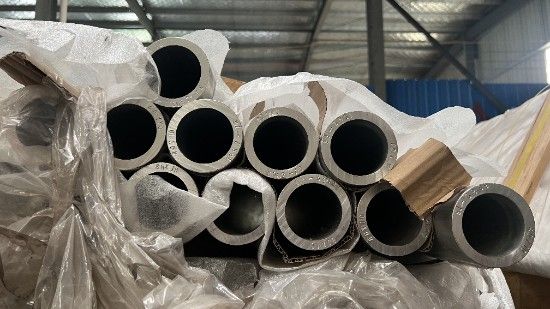Marine Aluminum Tube For Shipbuilding
Marine aluminum tubes are specialized aluminum alloy tubes used in shipbuilding and offshore engineering, ensuring their corrosion resistance, strength and toughness in marine environments. Widely used in hull structures, outfitting, piping systems and other applications, marine grade aluminum tubes are core materials for lightweight and corrosion-resistant shipbuilding. Their design, manufacturing, and certification must strictly adhere to classification society specifications.

Specification Requirements of Marine Aluminum Tube For Shipbuilding:
Marine grade aluminum tubes for shipbuilding must be certified by classification societies such as DNV, ABS, LR, and CCS, meeting their material standards and process requirements. For example:
- DNV specifications: Static strength verification of aluminum tubes utilizes a load and resistance factor design method, taking into account the effects of temperature on material properties.
- ABS specifications: Requires that aluminum tube wall thickness be calculated linearly based on the tube diameter (e.g., a tube with an outer diameter of 180 mm must have a wall thickness of at least 10 mm), and material certification must be provided.
- LR specifications: Reference ABS standards, emphasizing material fatigue resistance and weld quality.
Alloys of Marine Grade Aluminum Tube For Shipbuilding:
- 5083 aluminum alloy: With a magnesium content of 4.0%-4.9%, it offers excellent seawater corrosion resistance and is commonly used in hull structures, fuel pipes, and deck supports. Available grades include H112 (hot-treated) and H116 (stress corrosion resistant).
- 6061/6063 aluminum alloy: Anodizing can enhance surface corrosion resistance and is suitable for use in cabin water systems, condenser pipes, and other applications.
Key Features of Marine Aluminum Tube For Shipbuilding:
Corrosion Resistance:
Aluminum alloys offer excellent corrosion resistance and are resistant to seawater erosion.
Lightweight:
Aluminum is lighter than steel, helping to reduce the overall weight of a ship and improve fuel efficiency.
Strength:
High-strength aluminum alloys meet strength requirements while maintaining a low weight.
Weldability:
Aluminum tubes generally have good weldability, facilitating connection to other structural components.
Manufacturing Process of Marine Aluminum Tube For Shipbuilding:
- Seamless Extrusion:
Ensures uniform tube walls without welds, minimizing the risk of leakage. Suitable for hydraulic piping and fuel delivery systems.
- Cold and Hot Bending:
he bending radius of aluminum tubes is generally no less than three times the tube diameter. During hot bending, the temperature must be controlled (e.g., 5083 alloy should be heated to 400-500°C) and overheating must be avoided.
- Surface Treatment:
Anodizing, fluorocarbon spraying, or nano-coatings (e.g., antistatic wear-resistant coatings) can enhance corrosion and wear resistance.
Welding Process of Marine Grade Aluminum Tube For Shipbuilding:
- Welding Method:
Friction stir welding (FSW) is preferred to minimize thermal deformation. TIG welding is suitable for thin-walled tubes, but heat input must be controlled to prevent grain coarsening.
- Process Certification:
The welding process must be approved by a classification society. For example, the EN 1090 standard requires a welding procedure qualification (WPS) and personnel qualification (ISO 9606-1).
- Quality Inspection:
Welds must undergo non-destructive testing (such as X-ray and ultrasonic) and mechanical testing (tensile and bending) to ensure the absence of defects such as cracks and lack of fusion.
Application Scenarios of Marine Aluminum Tube For Shipbuilding:
- Fluid Systems: 5083 seamless aluminum tubes are used for fuel and cooling water pipes, withstanding high temperatures and high pressures.
- Hull Structure: 6061 thick-walled square tubes (e.g., 100×100×5mm) are used as bulkhead support beams, providing both rigidity and fatigue resistance.
The selection of marine grade aluminum pipes for shipbuilding requires a comprehensive consideration of classification society specifications, material properties, process costs, and environmental requirements. The future application of recycled and composite materials will drive the industry towards low-carbon and intelligent development.








